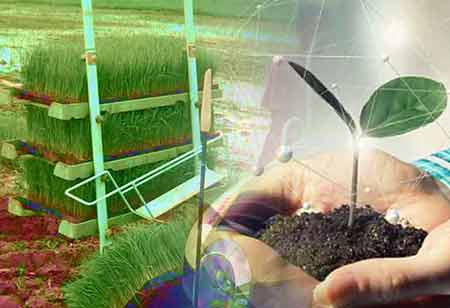Thank you for Subscribing to Agri Business Review Weekly Brief
Agricultural Applications of GIS
A GIS(Geographic Information System) is a system that has been put in place especially to capture, store, deploy, evaluate and present geographic data.

By
Agri Business Review | Friday, August 26, 2022
Stay ahead of the industry with exclusive feature stories on the top companies, expert insights and the latest news delivered straight to your inbox. Subscribe today.
GIS is an advantage to farmers because it helps them achieve the best in production and reduces extra costs which could have been incurred in operations, resulting in better management.
FREMONT, CA: A GIS(Geographic Information System) is a system that has been put in place especially to capture, store, deploy, evaluate and present geographic data. GIS is an advantage to farmers because it helps them achieve the best in production and reduces extra costs which could have been incurred in operations, resulting in better management.
This system has shown effective in the agricultural sector in different ways. The tools represented by the system have enabled users to create interactive questionnaires, analyze three-dimensional information, edit data in maps and present the findings of the operations.
1. Agricultural mapping
The application of GIS in agriculture is significant because it is very helpful in mapping the current and future variations in the sleet, crop output, and temperature of the soils. The mapping of the present features of a farm allows scientists and farmers to work together towards the same goal of creating more diverse, effective, and efficient farming techniques. Also, this helps increase food production in a country and can eradicate the problems of food shortages in distinct countries.
2. Soil analysis
Geographic Information Systems is also significant in agricultural soil analysis because it helps determine the type of soil, what plants to grow in, and how to maintain the nutrients in the soil to benefit the plants.
3. Data combination
GIS and numerous variations in the USDA sectors have been used to combine huge amounts of data into a data set. For example, countries such as the United States use GIS systems to solve crop issues, protect the crops and provide solutions to fake claims of crop damage. The system has also given the farmers an added advantage of having access to their crop information all season.
4. Interaction with farmers
GISs have helped farmers, particularly those in the United States, to access the data on their lands. This does not inevitably require them to have the GIS themselves. In addition, this also helps them interact with the data, ask questions and provide reliable and valuable on-ground data that cannot be generated through satellites. This, in turn, enhances the accuracy of the data provided by the machine in the end by about ninety percent.
5. Nutrient determination
Nutrients in a field must be determined first before farmers decide on adding nutrients to the soil. A geographic Information System is used to study the different statuses of nutrients in a field to enable farmers to reach a specific requirement for the external application of nutrients. This helps combine computer software modeling analysis with site analysis for a conclusive interpretation of varying outputs and inputs.
6. Assemble information
A geographic Information System is applied in assembling different layers of information, for example, soil moisture, nutrients, elevation, and topography, to aid in the production of a map, which will show some of the factors that influence crop yield. Moreover, the yield is used as a future reference, and the economic inputs and outputs are calculated according to the expected yield.
7. Store geospatial data & produce maps for land inventory
The Geographic Information System provided data indicating whether the land could support agriculture, wildlife, tourism, and forestry. For example, land capable of supporting agriculture is essential because it helps in the production of crops both locally and globally.
8. Precision farming
The sensors in tractors, satellites, and fields play a vital role in collecting data. Using GIS(Geographic Information System) in this area helps shape the collected data into viable information accessible and easily interpreted by land managers and farmers. Additionally, this helps in the making of informed decisions.
9. Real-time mapping
In the past few decades, satellites and drones have become popular and drastically grown. Moreover, framing has faced many challenges, the main challenge being managing water used for agricultural purposes and its availability.
Using satellite technology helps collect real-time data from the surface of the earth and accesses and monitors the condition of the land. In addition, drone technology has aided in collecting data, especially local field data such as the height of plants, diseases, flower count, and the presence of weeds, among others. This improvement in technology has helped decrease the amount of time that could have been spent walking to and from the field in search of data.
10. Raising alertness
Farming is an agricultural sector that needs awareness, especially about crops and their availability. Geographic Information System is handy in this sector because it effectively increases food scarcity awareness.
Once the affected area has been located, the necessary assistance is provided. The underlying causes of food insecurity are determined, and the GIS data is used to safeguard the communities or areas affected.
Geographic Information System has allowed farmers to envisage study and understand the extent of the geographic data being stored daily. This data is easily communicated to various farmers, which helps them to know the thriving crops, the controlled use of fertilizers, and the extent to which natural disasters and pollution hinder production.





